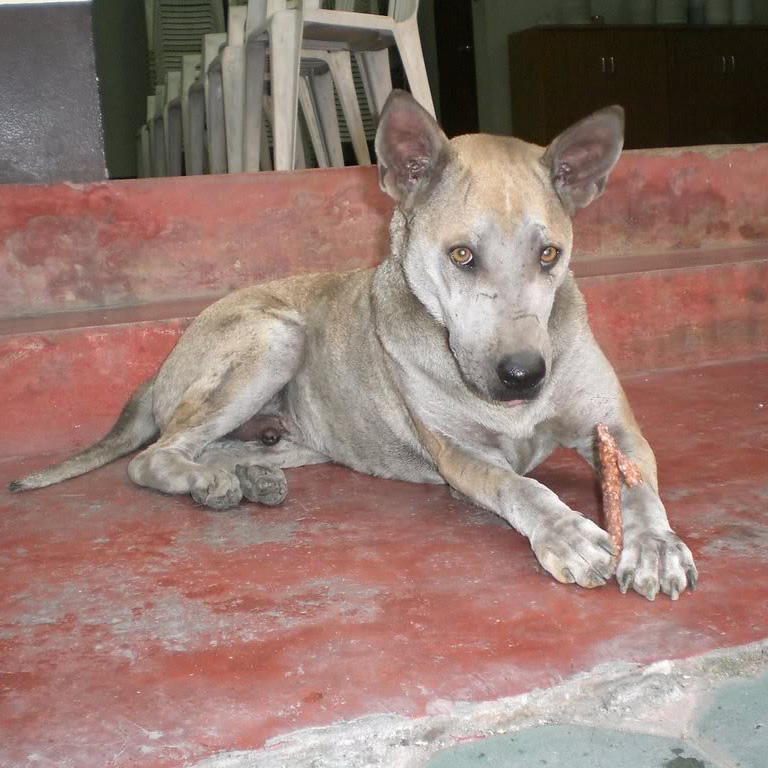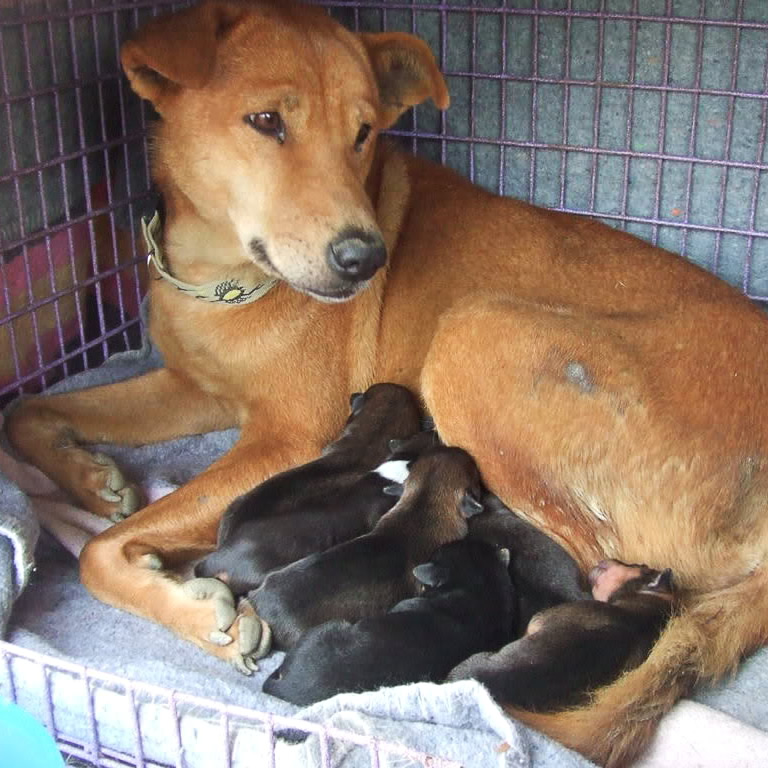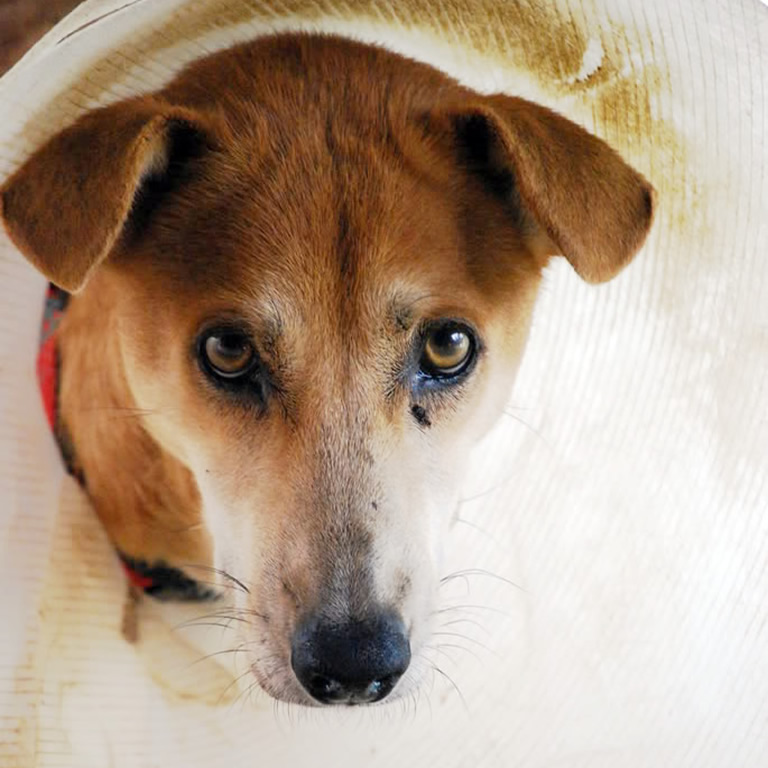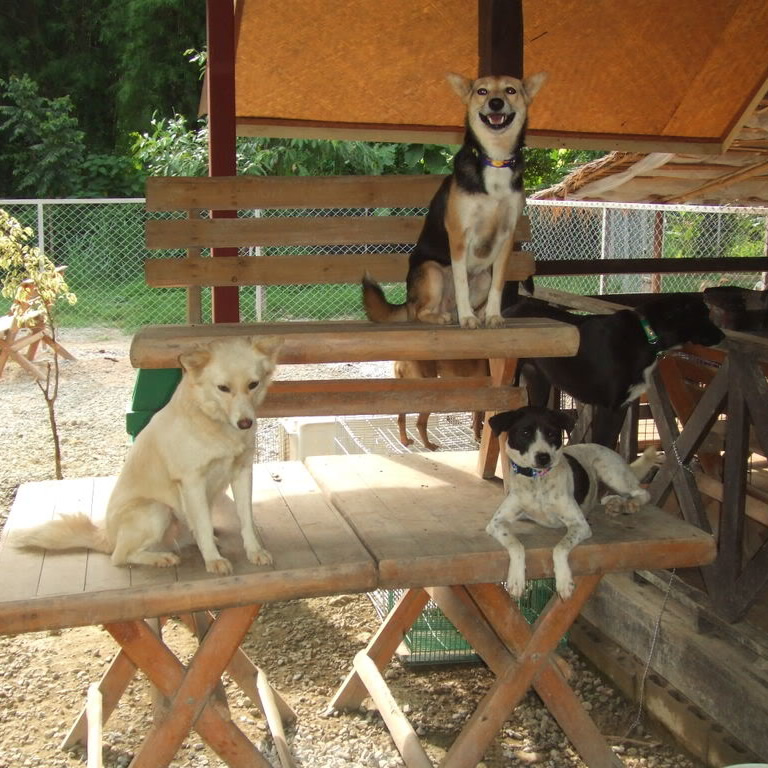Objectives
- Reducing the overpopulation of street and temple dogs through sterilization /spaying programs and local adoptions.
- Operating a rescue centre for puppies and dogs (which is used for adoptions, after-care from surgery/sterilisation, or for transitional rescue for dogs that are in immediate danger).
- Improving the health status of homeless dogs through vaccinations and coordinating medical care in cooperation with our veterinary team.
- Fighting the dog meat trade through advocacy and education.
Helping people help their dogs through:
- Cooperation with monks and employees of temples to improve the quality of life for temple dogs.
- Information to dog owners about sterilisations, medical care, taking them along with us to the vet, showing people how to show affection through gentle play and petting.
- Reducing death rate by helping people understand that there are solutions other than killing dogs.
- School education activities to make the younger generation more aware of animal welfare.
Although we concentrate mainly on dogs, we are able to facilitate treatment and sterilisations for cats as well as liaising with nuns at temples who foster kittens and adult cats if people are interested in adoption.





